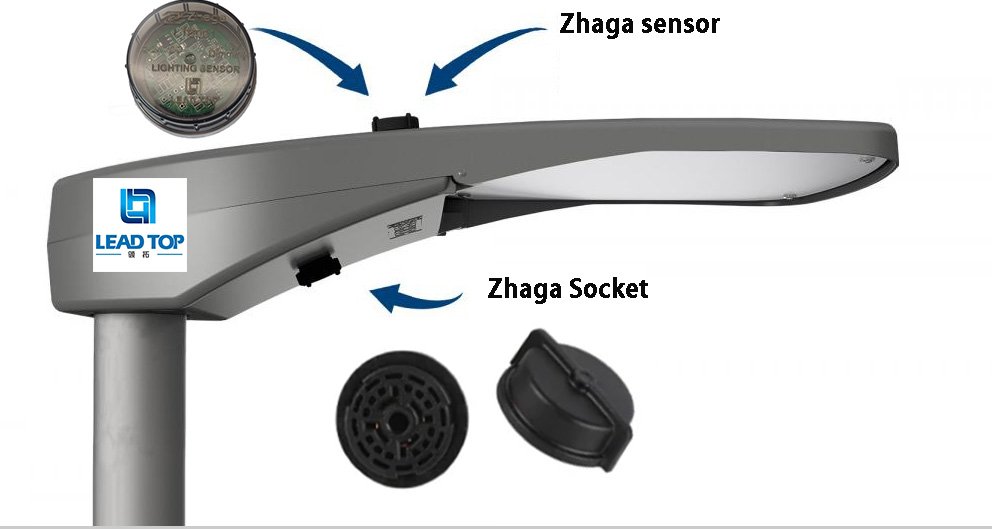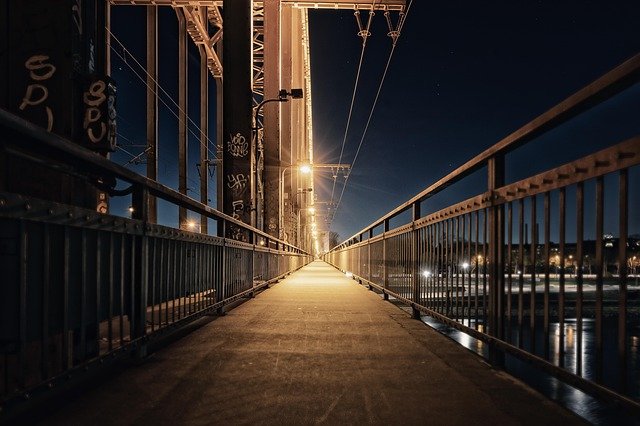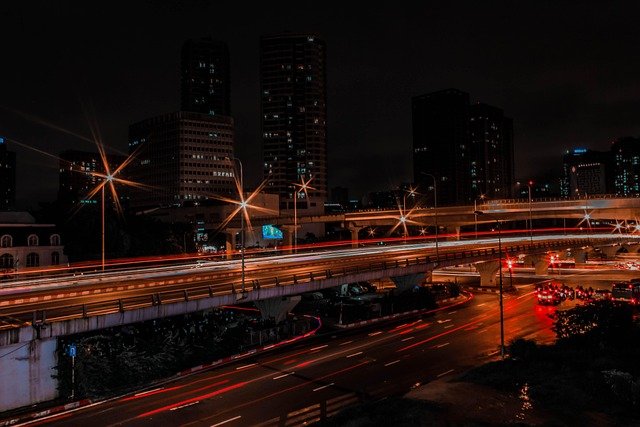Outdoor LED lighting projects, whether for city streets, public parks, campuses, or parking lots, need not only long-lasting fixtures but also the right connector standard to confirm best performance. For years, the American NEMA socket has ruled. But in last few years, the European Zhaga Book 18 has come out as a strong alternative, specifically in smart lighting standard.
Learning the difference in these two standards is important for municipalities and contractors planning any outdoor lighting upgrade because choosing carefully confirms cost savings, easy maintenance, and future-proof integration with smart city networks.
Overview of NEMA Sockets
The NEMA (National Electrical Manufacturers Association) socket is the traditional LED streetlight connector standard in the United States and many international projects influenced by American practices.
Key Characteristics of NEMA Sockets:
- Circular receptacles having 3-pin, 5-pin, or 7-pin configurations
- Provide electrical and mechanical connections between the luminaire or control nodes
- Broadly known for their ruggedness and reliability
- Established supply chains, making components readily available
Common Applications:
- Street and highway lighting in U.S. municipalities
- Industrial parks and warehouses needing rugged outdoor lighting control
- Retrofits of older HID systems with LED luminaires
| NEMA Socket Features | Advantages | Limitations |
| Familiarity | Known by electricians worldwide | Less adaptable to new digital protocols |
| Availability | Large-scale manufacturing & global supply | Limited in smart city sensor integration |
| Mechanical Strength | Robust, secure fit for outdoors | Bulkier design, larger footprint |
Takeaway: NEMA sockets are great for basic LED retrofits and projects where mechanical robustness and familiarity matter a lot. However, their limitations become clear in advanced smart lighting standards where digital communication and IoT integration are essential, For projects where the goal is long-term adaptability or integration with advanced smart lighting standards, planners may find NEMA less flexible compared to newer solutions like Zhaga. Still, in terms of proven durability in harsh outdoor conditions, NEMA remains a dependable choice for municipalities and contractors focused on straightforward, rugged performance.

Advantages of Zhaga Book 18 in Europe and Smart City Projects
The Zhaga Book 18 standard, originally formed in Europe, takes a different approach. Instead of focusing only on power connection, it emphasizes interoperability and modularity, two pillars of future-ready smart lighting standards.
Why Zhaga Book 18 Matters:
- Compact Design: Low-profile connectors are best for shiny LED fixtures
- Interoperability: Without redesigning the luminaire, modules from different manufacturers can be swapped
- D4i Compatibility: When merged with D4i drivers, Zhaga enables energy monitoring and remote management
- Plug-and-Play: Sensors and controllers snap in easily, decreasing installation time
- Future-Proofing: Municipalities can upgrade controls without replacing entire luminaires.
| Zhaga Book 18 Features | Advantages | Practical Benefits |
| Interoperability | Works with multi-vendor modules | Greater choice & flexibility |
| D4i Integration | Real-time data communication | Energy savings & predictive maintenance |
| Compact Size | Sleek design, smaller footprint | Easier fixture design & lighter poles |
| Modularity | Plug-and-play upgrades | Lower long-term cost of outdoor lighting upgrade |
Takeaway: Zhaga is built for the smart city era. It gives cities and OEMs the ability to adapt quickly, reduce maintenance costs, and prepare for future IoT requirements.

Case Example: Upgrading a Streetlight Network
To show the real-world difference between Zhaga vs NEMA, imagine a mid-sized European city with 5,000 NEMA-based streetlights:
Scenario:
- The city wants a smart lighting network that contains features like dimming, real-time diagnostics, and integration with traffic sensors
- With NEMA sockets, achieving this requires bulky 7-pin controllers and costly system redesigns.
Solution with Zhaga:
- Switching to Zhaga Book 18 connectors allowed seamless installation of LED streetlight connectors that support D4i drivers.
- The city deployed sensors that measure not only energy but also air quality and pedestrian activity.
- Modules can be swapped in minutes without fixture replacement.
Results:
• 30% energy savings from adaptive dimming and scheduling
• 40% fewer maintenance visits, thanks to predictive diagnostics
• Scalable smart city integration, without massive reinvestment enabling future upgrades.
Beyond the immediate cost savings, the Zhaga-based upgrade also created a stronger foundation for the city’s broader smart lighting standards strategy. Maintenance crews reported faster turnaround times since faulty modules could be swapped during routine inspections without requiring electricians to rewire connections. The flexible design also made it easier to try new services, such as adaptive brightness linked to weather data, unlike the bulky NEMA retrofit path. Zhaga Book 18 gives flexibility, less downtime, and positioned the city as a leader in outdoor lighting upgrades.
Decision Factors: Compatibility, Scalability, and Maintenance
When choosing between Zhaga vs NEMA, project planners should check three serious factors:
1. Compatibility
- NEMA: Best for conventional LED retrofits where legacy compatibility is needed
- Zhaga: Best for projects emphasizing future-proofing, IoT integration, and smart lighting standards
2. Scalability
- NEMA: Can be expanded with 5-pin and 7-pin variations but limited by design
- Zhaga: Truly modular: without redesign it supports sensors, controllers, and new modules
3. Maintenance Efficiency
- NEMA: Replacing components often requires rewiring.
- Zhaga: Modules can be swapped quickly, reducing downtime and labor costs
| Factor | NEMA Strengths | Zhaga Strengths |
| Compatibility | Legacy systems, widespread in the U.S. | Future-ready, global smart lighting standards |
| Scalability | Limited to 7-pin designs | Plug-and-play modularity, D4i ready |
| Maintenance | Familiar but labor-intensive | Easy module replacement, less downtime |
| Best Fit | Basic outdoor lighting upgrade | Smart cities, connected urban networks |
Conclusion / CTA
In the debate of Zhaga vs NEMA, both standards offer important roles in the outdoor lighting industry. NEMA sockets is a strong choice for traditional retrofits, projects where mechanical durability is very important, and regions where these connectors are already the norm. However, for municipalities and contractors looking for smart lighting standards, scalability, and long-term outdoor lighting upgrades, Zhaga Book 18 gives a future-ready, modular approach. At Lead-Top Electrical, we provide:
- A full range of Zhaga-compatible LED streetlight connectors for easy integration.
- Surge-protected, weatherproof controllers designed and tested for long service life.
- Expert guidance for transitioning from NEMA to Zhaga in large-scale projects.
- Support for smart city applications, including IoT-ready modules and D4i drivers.
By partnering with Lead-Top, project planners not only simplify today’s installations but also position their lighting infrastructure for decades of innovation and adaptability.
Ready to evaluate your options? Contact Lead-Top experts today and ensure your outdoor LED installations achieve seamless interoperability, long-term performance, and compliance with evolving smart lighting standards.
References:
- https://leaditop.com/product-category/product/zhaga-control/?_gl=1*1ec4rix*_up*MQ..*_ga*NzM5NTEwOTM3LjE3NTc4NTA5MDA.*_ga_S4H39S96GX*czE3NTc4NTA4OTYkbzEkZzAkdDE3NTc4NTA4OTYkajYwJGwwJGg4NDc2ODY1OTM.
- https://leaditop.com/nema-connector/
- https://leaditop.com/
- https://en.wikipedia.org/wiki/Internet_of_things
- https://en.wikipedia.org/wiki/Digital_Addressable_Lighting_Interface







